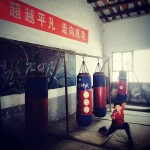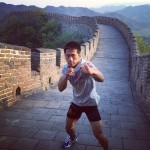I wrote a story on the fly that in and of itself is a bit short and shallow, but might point at a very interesting aspect of martial arts in China. The story, “Making the List: Traditional Martial Arts and Community Power,” came about as many of my posts do, during a conversation with Ben Judkins of Kungfu Tea. The idea is basically that Chinese martial artists are more interested in the power of community through recognition (often from the authorities) than in the power of heroic glory through hand to hand combat.
And really this should make a lot of sense to anyone who takes a step back to look at it. If a community is codified, and has its stories and legends enshrined as “history” as opposed to “myth,” then longevity and survival into the future are pretty much assured. To destroy a culture, you must first burn their books. To create a culture, you must first write your story and have it read. Once a martial art is recognized as a community, it becomes something so much more than the masters or students who developed the style and for the masters today in China who see their arts withering before their eyes, nothing is more precious than “making the list.”
In my mind I picture an ark leaving port. Martial arts right now seem to be an ark on the move, with mixed martial arts driving a need for all styles to prove themselves in some way or be left behind. In the West, this discussion revolves around efficacy in one-on-one combat, but in the East that is not necessarily the case.
This is one aspect of the disconnect between modern mixed martial arts’ rise in popularity and the slow demise of traditional martial arts—which I honestly am less inclined to subscribe to when the world is taken into account, and not just Mainland China. But that is a different discussion … the point I am trying to understand is this:
If we measure the strength of traditional martial arts by the number of combatants we can name active in the many MMA etc promotion, then things seem dismal. But if we change the metric to the strength of a community, to the power of the myths, to the enduring nature of “kung fu” the brand and symbol of a certain culture, are things still as dismal?





